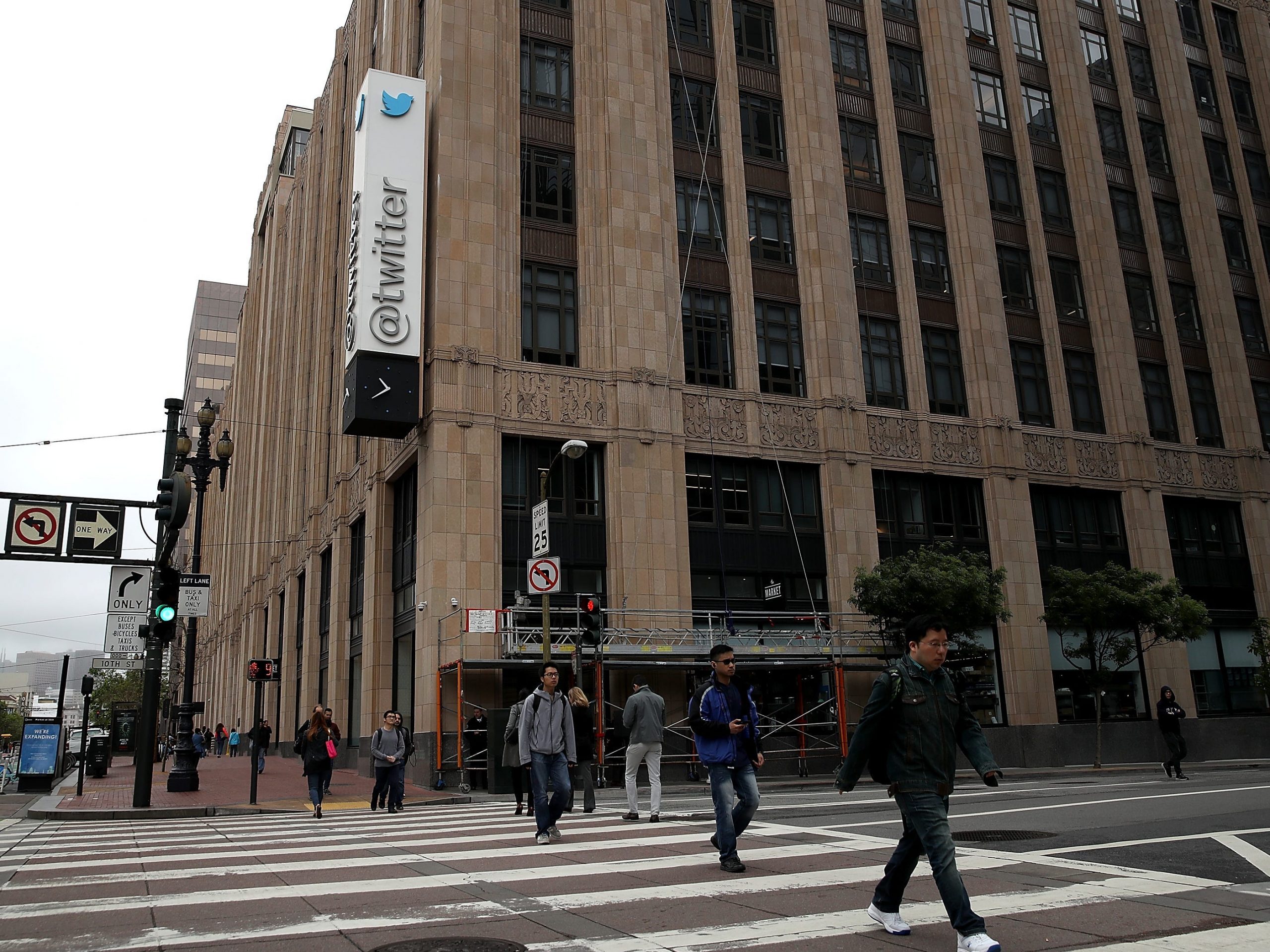
Justin Sullivan/Getty Images
- Twitter has been working on “decentralizing” its workforce since 2018, including adding resources and policies to make life easier for remote workers.
- Some teams at Twitter have invented hand signals to help employees speak up during virtual meetings, while other teams have invented new phrases to get meetings back on track, according to the Washington Post.
- This has come in handy during the coronavirus outbreak: Twitter was the first major tech company to have its workforce start working from home, and CEO Jack Dorsey has told employees they may keep working remotely forever.
- Twitter has since decided to sublease 100,000 square feet at its San Francisco headquarters and has a policy in place to cut pay for employees who move outside the Bay Area to a less expensive region.
- Visit Business Insider’s homepage for more stories.
Even before the coronavirus outbreak hit the US, Twitter was preparing for a future that relied heavily on remote work — and that included employing new tactics to help employees work well together from afar.
That’s according to a new piece by the Washington Post’s Elizabeth Dwoskin, which explores Twitter’s focus on creating a “distributed” workforce, which has been years in the making. The idea was sparked by a successful day working at home for Twitter CEO Jack Dorsey in January 2018, which led him to send a company-wide email celebrating the merits of working outside the office.
“We should always optimize for where people feel their most creative, and I’d love to see us be a lot more flexible about working from home,” Dorsey wrote, according to the Post.
Since then, Dorsey has been outspoken about decentralizing Twitter, which he has described as “the whole promise of the internet” in the first place.
“It makes location irrelevant but yet here we are, an internet company, that’s completely centralizing in San Francisco,” Dorsey said on “The Boardroom: Out of Office” podcast in August. “We’re not living up to the ideals of what the internet inspired us to be and what it can show.”
The result has been a push for more flexibility around where Twitter employees can work and new resources and policies to make life easier for those who do choose to leave the office. This has come in handy especially after the coronavirus outbreak forced Twitter to close its doors — Dorsey has since told employees that they may work from home "forever" if they'd like.
Prior to the pandemic, managers at Twitter began working from home a few days a week, traveling around the world, or working remotely on a permanent basis. The company's vice president of engineering, Mike Montano, began testing virtual meetings at the office, asking people on his team to sit in different rooms and connect on Google Hangouts, the Post reports.
Elsewhere at Twitter, teams are using new phrases and hand signals to make video meetings more seamless. Employees now have a way to signal that they have something to say or need to sign off, and Twitter's human resources team uses the phrase "ELMO" — short for "Enough! Let's move on" — to help get meetings back on track, according to the Post.
Twitter has been making other adjustments as more employees worked remotely, including pay localization: those who move outside of the Bay Area to less expensive cities are likely to face a pay cut, a company spokesperson told Business Insider last month.
Twitter has also decided to sublease 100,000 square feet of space at its San Francisco headquarters. A Twitter spokesperson told Business Insider that the company's focus on decentralizing its workforce "has allowed us to flex our active leased spaces as needed."
While Twitter appears to be furthest along in its plan to have a distributed workforce, it's not the only tech company reconsidering the future of working in an office: In late May, Facebook said that it would allow some employees to work from home on a permanent basis — Shopify, Slack, Zillow, and Indeed have all since followed suit.
Do you work in tech? Got a tip about how your company is evolving amid the coronavirus pandemic? Contact this reporter by Twitter DM (@averyhartmans) or email ([email protected]).

